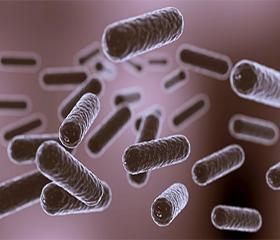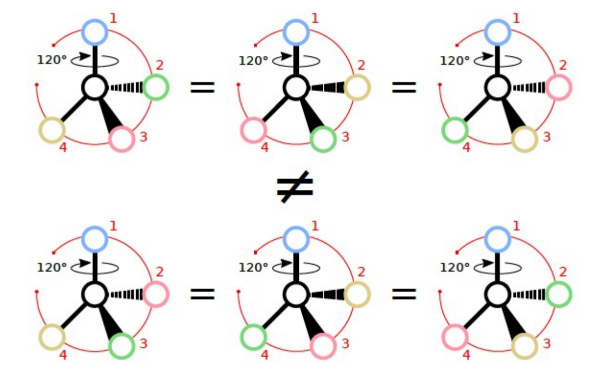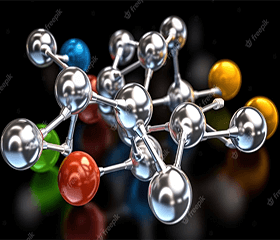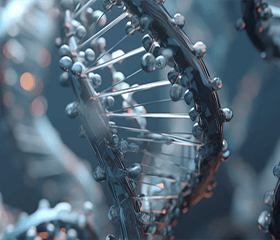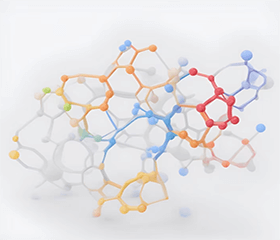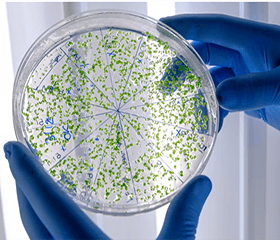Extracellular signal-regulated kinase 1/2 (ERK) belongs to the mitogen-activated protein kinase (MAPK) family. ERK is generally located in the cytoplasm; upon activation, ERK enters the nucleus and regulates transcription factor activity and gene expression. In cells from yeast to mammals, receptor tyrosine kinases (RTKs) are known to exploit a highly conserved signal-transduction pathway, carrying the signal triggered by the binding of growth factors to activate ERK. The MAPK/ERK pathway (also known as the Ras-Raf-MEK-ERK pathway) is a chain of proteins in the cell that communicates a signal from a receptor on the surface of the cell to the DNA in the nucleus of the cell.

Activation of the ERK pathway involves the guanosine triphosphate (GTP)‐loading of Ras at the plasma membrane, and the sequential activation of a series of protein kinases. Initially, activated Ras recruits the Raf family of kinases such as Raf‐1 to the plasma membrane, a key step in a complex activation process that is not yet fully resolved. Raf‐1 acts as a MAPK kinase and activates MAPK/ERK kinase 1 and 2 (MEK1/2; also called MAPK kinase1/2) by serine phosphorylation. MEK1/2, dual‐specificity protein kinases, then catalyze the phosphorylation of ERK1 and ERK2 (p44 MAPK and p42 MAPK, respectively) on tyrosine and threonine residues. Activated ERK, when translocated to the nucleus, phosphorylates certain nuclear transcription factors (e.g. Myc), that govern the cellular responses. Phosphorylated transcription factors stimulate transcription of genes that are responsible for encoding different proteins, including the ones required for cell cycle progression
When one of the proteins in the pathway is mutated, it can become stuck in the "on" or "off" position. Excessive activation of upstream proteins and kinases in the ERK pathway has been shown to induce various diseases, including cancer, inflammation, developmental disorders, and neurological disorders. Dysfunction in the Ras-ERK pathway is a major trigger for the development of most cancer types. RAS has been identified as an oncogene and is mutationally activated in approximately one-third of all cancers, with the pancreas (90%), colon (50%), thyroid (50%), lung (30%), and melanoma (25%) with high-ranking prevalence. In this respect, ERK1/2 is activated by a wide variety of mitogenic stimuli that interact with structurally distinct receptors and thus represents a convergence point for the majority, if not all, of the mitogenic signaling pathways. Down‐regulation of negative regulators of the ERK pathway, such as mitogen‐activated protein (MAP) kinase phosphatases (MKPs) and Sprouty proteins, would also result in the constitutive activation of ERK1/2.
The discovery of specific oncogene mutations that activate the MAPK/ERK pathway has spurred the development of targeted therapies that apply to multiple tumor types. The downstream MAPK/ERK signaling node, which is activated predominantly by upstream SRC/RAS/RAF signaling, is also regulated by modulation through parallel pathways. This creates a complexity within and between tumors that impedes the ability to translate therapeutic findings across tumors. The recent years have seen significant advances in the development of pharmacological agents directed against the kinases that populate the MAPK/ERK pathway.
Compounds inhibiting the kinase activities of BRAF, MEK, and ERK have yielded promising preclinical results, and some have progressed to the clinic for the treatment of some types of tumors. Clinical benefits achieved by BRAF and MEK inhibitors have shown that targeting these downstream RAS effectors is a very promising approach for therapies of cancers harboring oncogenic mutations in this pathway. It is a significant challenge to develop RAS inhibitors, and three decades of this effort has not generated clinically effective molecules so far. This difficulty is attributed to the tertiary structure of RAS protein, which is very smooth and floppy, thus hardly providing a binding pocket for small molecule inhibitors. Recently, it has been reported that small-molecule compounds, SML-8-73-1 and SML-10-70-1, can selectively inhibit KRAS G12C mutant. Biochemical analysis has shown that the inhibition of KRAS G12C with SML-8-73-1 restrains KRAS protein in an inactive state.

As the downstream kinase of RAS in the MAPK cascade, the RAF family proteins play an important role in this signal transduction. Among the three RAF isoforms, CRAF was first identified as an oncogene and considered a potential target, as CRAF is documented as an important RAS effector. Efforts in targeting CRAF have yielded numerous pre-clinical compounds. In particular, Sorafenib, an orally-available compound that was originally discovered as a CRAF (also BRAF) inhibitor and lately identified to be a multikinase inhibitor, was approved for renal and hepatocellular carcinoma, for its anti-angiogenesis effect.
Selective BRAF inhibitors, such as vemurafenib and dabrafenib, have achieved clinical benefits. Vemurafenib was the first BRAF-V600E-selective inhibitor that entered clinical trials. It was approved for metastatic and unresectable BRAF-mutated melanomas. Dabrafenib (Tafinlar; GlaxoSmithKline) was approved for BRAF V600K-mutated metastatic melanoma. Vemurafenib and dabrafenib gained desirable clinical efficacy in the treatment of patients suffering BRAF-V600E and BRAF-V600K melanomas, which yielded a significant improvement in disease-free progression and overall survival of these patients.
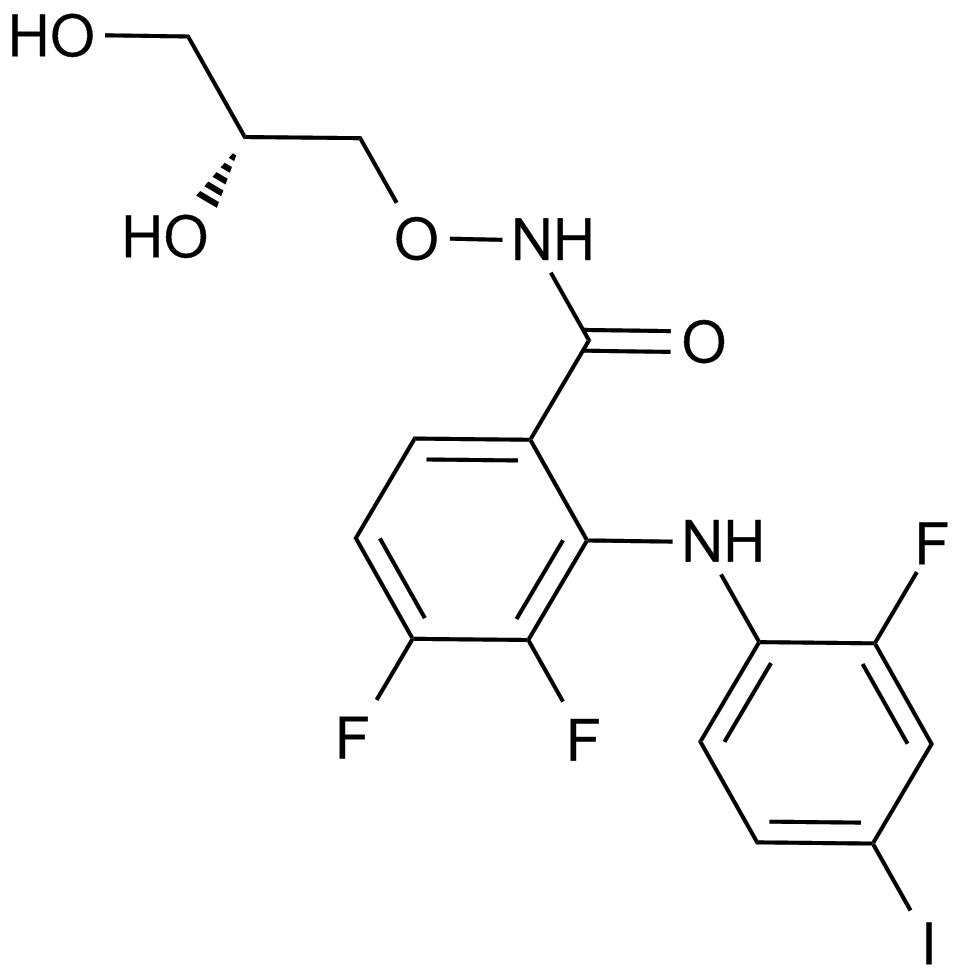
Studies in tumor cells with mutant V600EBRAF have demonstrated that RAF kinase inhibitors prevent ERK signaling. The selective MEK inhibitor PD0325901 decreased cyclin D1 protein expression, thereby decreasing cell proliferation in BRAF‐mutant melanoma xenograft models. High plasma concentrations of the RAF inhibitor vemurafenib are associated with strong ERK pathway inhibition. Patients with advanced‐stage, V600EBRAF‐mutated, metastatic melanoma receiving vemurafenib treatment who achieved >80% inhibition of cytoplasmic ERK phosphorylation, as observed in paired pretreatment and on‐treatment biopsy samples, demonstrated clinical evidence of partial remission.
The MEK1/2 kinases in the MAPK pathway were not considered potential targets in the past, as MEK1/2 is rarely mutated in human cancers63. Lately, with the emergence of the paradoxical phenomenon of the first generation of RAF inhibitors, targeting MEK1/2 has attracted growing interest among pharmacological researchers. MEK1/2 inhibitor PD098059 was reported in 1995, which was shown to inhibit the dephosphorylated form of MEK1 and MEK1 mutant (S217E, S221E). This compound is an allosteric inhibitor and its discovery indicated that MEK1/2 are valuable cancer drug targets. Trametinib is the first MEK inhibitor to reach the market, approved as a single agent for BRAF V600E metastatic melanoma. FDA also approved the combination of dabrafenib and trametinib for BRAF-V600E/K-mutant metastatic melanoma in 2014. The combination of the RAF inhibitor with the MEK inhibitor cobimetinib (GDC-0973) led to simultaneous suppression of both the melanoma and RAF-inhibitor-induced leukemia. Cobimetinib (GDC-0973, XL518) was approved for melanoma in tandem with BRAF inhibitor vemurafenib [120]. Vemurafenib and dabrafenib are efficient only in BRAF V600-driven tumors.

Another promising ERK1/2 inhibitor is ulixertinib (BVD-523, VRT752271); this compound has a significant anti-tumoral effect in several cell lines, including those having mutations in the MAPK signaling pathways. Ulixertinib was also active in the cohort of patients with melanoma who had failed BRAF–MEK inhibitor therapy, with 3 of 19 showing a partial response. This is of particular interest given the recently published review that discussed ERK1/2 regulatory involvement in terms of cellular stress-induced senescence and how this mechanism has the therapeutic potential for regulating cancer. Moreover, this further develops the role that MAPK activity has in terms of cellular stress, more specifically, the discovery that the p38–MAP kinase-activated protein kinase 2 kinase pathway causes a cellular response to replicative stress.
AEZS-136 is a highly potent and selective ATP-competitive ERK inhibitor, which can overcome the RAF inhibitor-induced paradoxical cell activation and acquired resistance to MEK inhibitors in tumor cells. Compared with common RAF inhibitors, AEZS-136 shows a more potent capability to prevent BRAF wild-type, BRAF-V600E mutant, RAS wild-type, and KRAS mutant tumor cell line proliferation. AEZS-136 is efficacious in MEK inhibitor-resistant HCT-116 and MDA-MB-231 cells which have been well characterized in terms of the MEK-F129L allosteric binding pocket mutation, as well as with varying degrees of KRAS amplification, and in cellular proliferation assays and MAPK pathway phosphorylation studies.

Phytochemicals or related derivative agents were proven to have an important function as therapeutic agents in cancer. The capacity of these secondary plant metabolites to interfere with the expression of coding and non-coding genes is secondly transposed in the modulation of multiple cellular pathways, including MAPK. MAPK and NF-κB survival pathways were experimentally inhibited using U0126 and caffeic acid phenethyl ester (CAPE) for the reduction of cell growth in pancreatic cells. Apigenin is another compound with valuable chemopreventive activities that inhibits the progression and metastasis of choriocarcinoma cells through regulation of the PI3K/AKT and ERK1/2 MAPK signal transduction mechanism. Coumestrol, a phytoestrogen, holds antiproliferative effects via modulation of MAPK-related genes and an AKT-related compensatory pathway.
MAPK cascades were discovered more than three decades ago and new functions are continuously revealed. The MAPK/ERK pathway is the foremost orchestrator of a cancer cell’s response to a wide range of external and internal stimuli. Downstream ERK kinase appears to be the Achilles' Heel of the MAPK pathway. Targeting ERK kinase provides potential therapeutic opportunities for a broad spectrum of cancers bearing RAS, RAF, and MEK mutations as well as those with acquired resistance to BRAF and MEK inhibitors.


